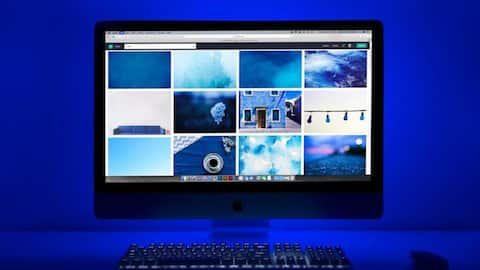Ways to eyes from screen blue light
What's the story
In the digital age, screens are ubiquitous and essential for work, education, and leisure.
However, prolonged exposure to blue light emitted by devices such as smartphones, tablets, and computers can have detrimental effects on eye health, including eye strain, dry eyes, and disrupted sleep cycles.
Here are 5 effective strategies to minimize these risks and protect your eyes.
Night mode
Use blue light filters
Modern devices often include built-in features like "Night Shift" for Apple products or "Night Mode" on Android and Windows interfaces.
These settings allow users to adjust the amount of blue light emitted, which is particularly beneficial during evening hours.
By reducing blue light exposure, these features help regulate your natural sleep cycle, potentially improving sleep quality and minimizing disruptions caused by prolonged screen time.
Reset focus
Follow the 20-20-20 rule
Optometrists advocate for a 20-20-20 rule to alleviate eye strain: every 20 minutes, take a 20-second break to gaze at something 20 feet away.
This routine aids in resetting focus, relieving tension in eye muscles, and combating fatigue.
By incorporating this simple practice into your routine, especially during prolonged screen use, you can promote healthier eyes and mitigate the effects of digital eye strain.
Adjusting brightness
Adjust screen settings
To optimize your screen settings for comfort, consider adjusting the brightness to align with the ambient light in your room.
When your screen brightness matches your surroundings, your eyes experience less strain.
Moreover, boosting the text size and contrast can improve viewing comfort, lessening the strain on your eyes and aiding in relieving eye fatigue during prolonged screen sessions.
Eye moisture
Screen positioning
Position your screen about an arm's length away and slightly below eye level to minimize strain on eye muscles and neck.
This placement allows eyelids to partially cover the eyes, reducing tear evaporation and maintaining moisture.
Additionally, stay hydrated and blink more frequently while using devices to refresh your eyes with tears, preventing dryness and irritation.
Diminish glare
Use anti-reflective lenses
If you wear glasses, consider lenses with anti-reflective coatings which reduce glare and increase contrast.
Similarly, using an anti-reflective screen protector can help diminish the glare from your screen, cutting down on the amount of blue light reaching your eyes.
Moreover, regular check-ups with an eye care professional can help detect early signs of strain or damage due to blue light exposure.
Nutrient rich food
Boost your macular pigment
Boost your macular pigment with a diet rich in foods like leafy greens, and colorful fruits.
These foods contain lutein and zeaxanthin, antioxidants crucial for eye health.
Incorporate spinach, kale, corn, and citrus fruits into your meals to enhance macular protection against blue light and oxidative stress.
Additionally, consume omega-3 fatty acids found in flaxseeds, and walnuts.
